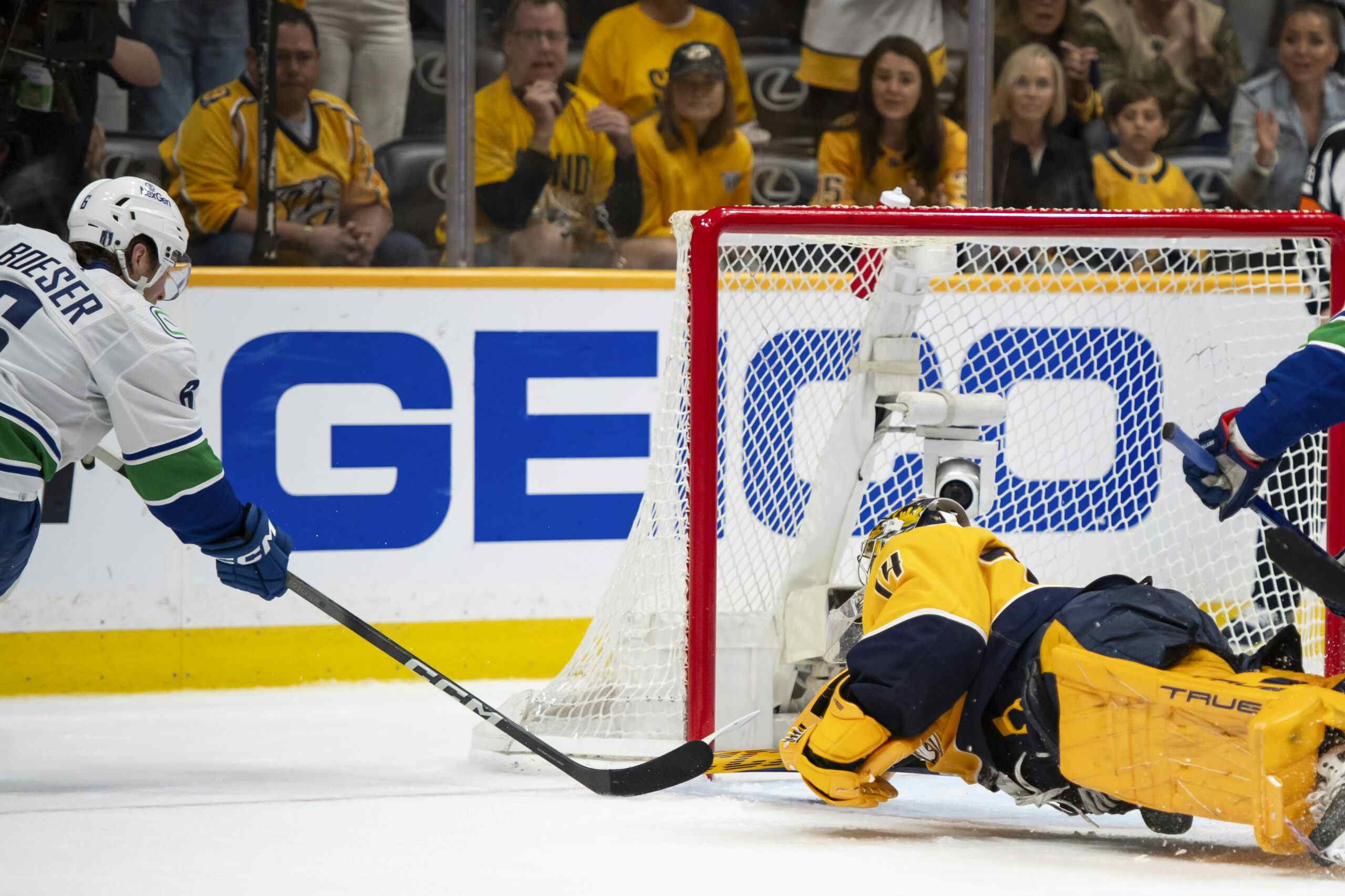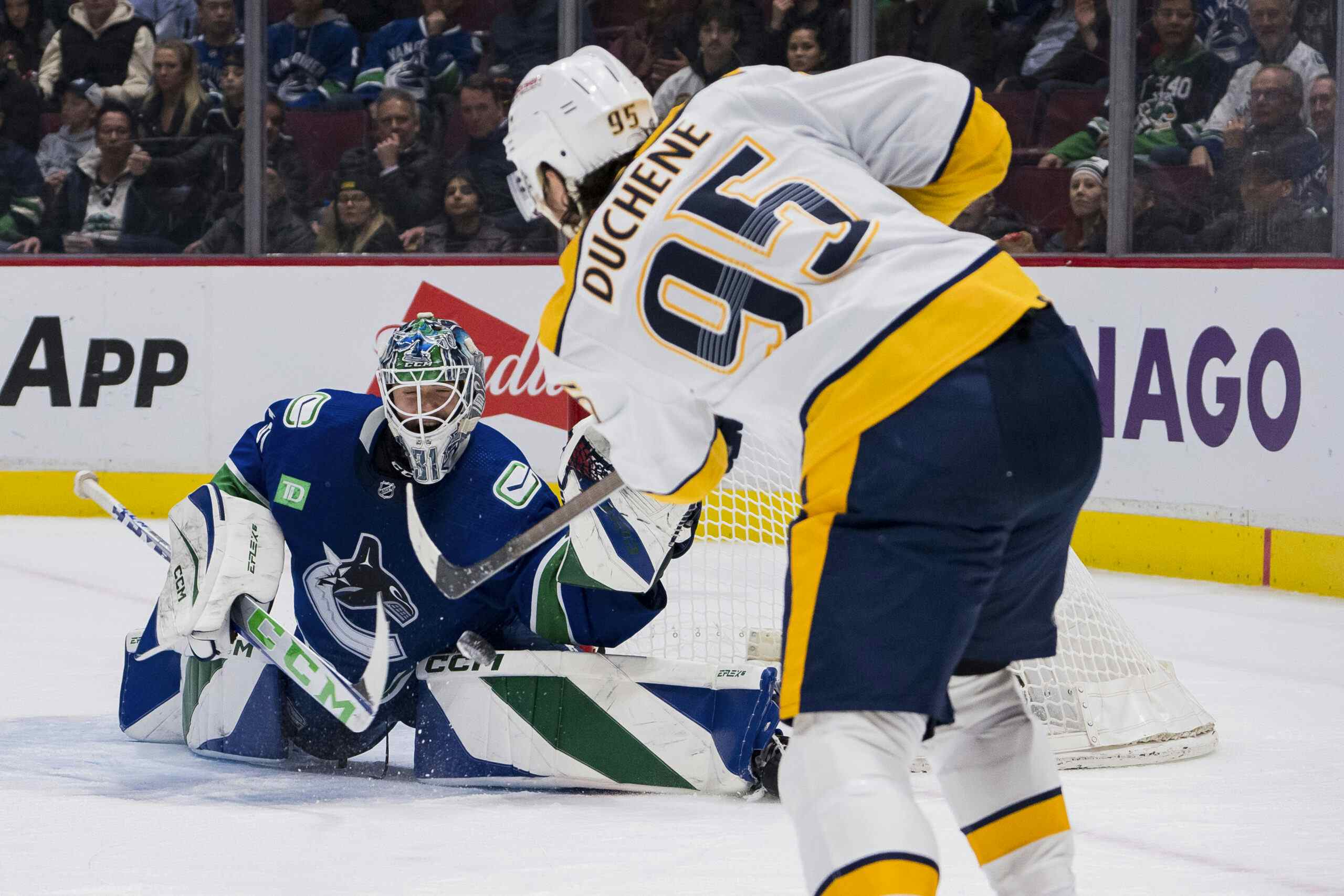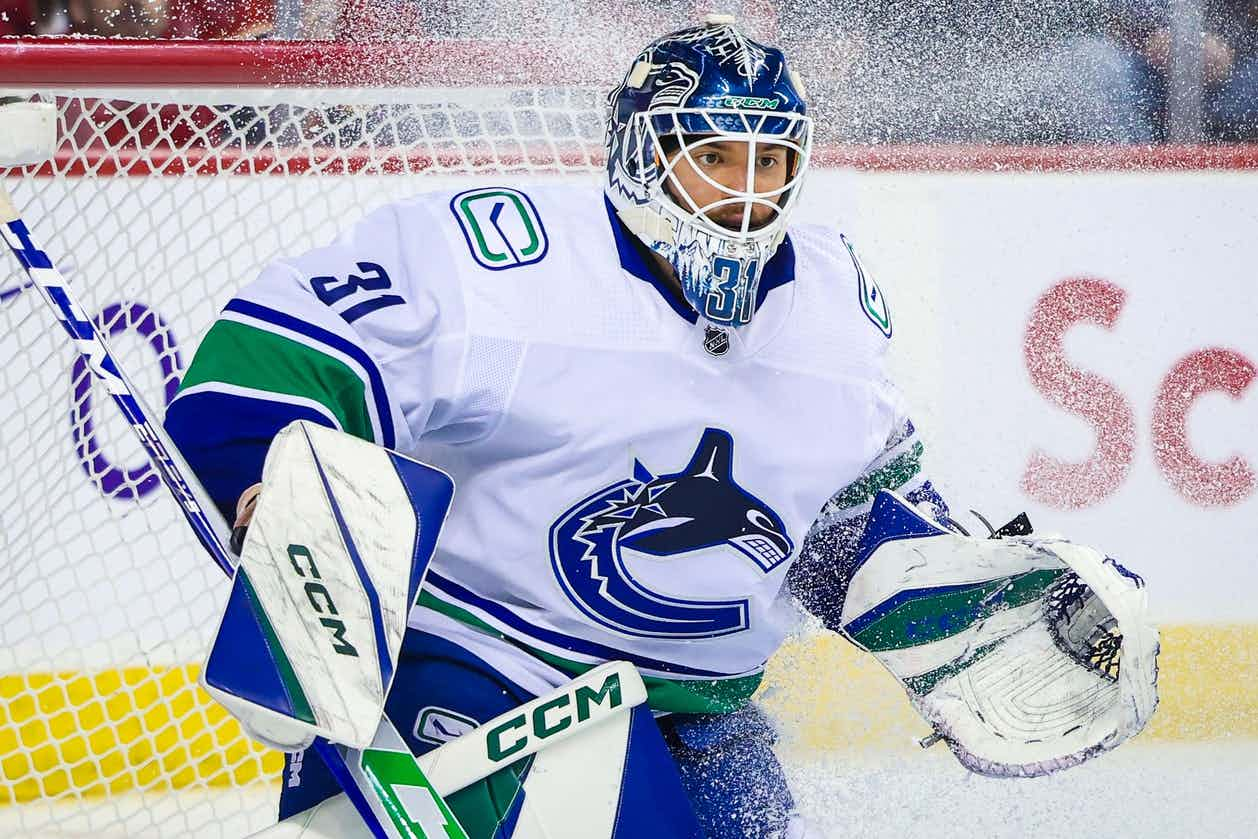Bold Moves: The Keith Ballard Trade
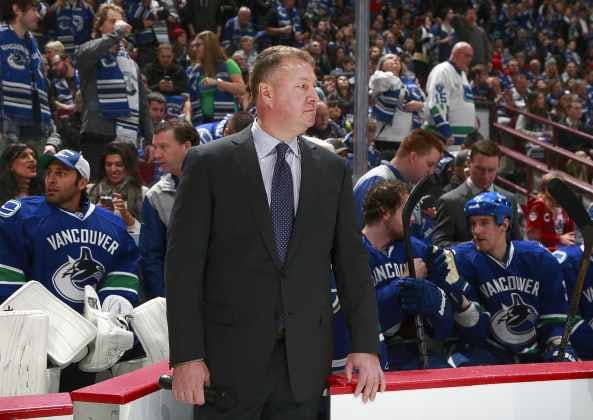
Photo Credit: Jeff Vinnick via NHLI/Getty
This hockey season for the first time in his tenure as General Manager, Mike Gillis is beginning to feel some heat in the Vancouver sports market. Since he was first hired back in 2008, he’s largely been immune to critcism and mostly that’s for good reason. He’s nailed the details, racked up one of the best win/loss records in the NHL and his team made it all the way to game seven of the Stanley Cup Final. In doing so, he’s built up a fair bit of capital on the "good will" front.
But that capital is evaporating as quickly as Vancouver’s strangehold on the Northwest Division. Part of the reason that the court of public opinion has slowly begun to turn against Mike Gillis is, in part, that for the first season since 2008-09 Vancouver’s PDO (PDO is the sum of a team’s shooting percentage and save percentage, and functions as a shorthand measurement of puck luck) isn’t two standard deviations above the mean.
But it’s his performance on the trade market where the criticism of Mike Gillis begins to really pick up some urgency. This week we’ll profile four "bold moves" that Mike Gillis has made over the past three seasons. We’ll point out the particular areas where Mike Gillis has spent his "good will" and invested in a handful of assets from whom he’s recouped a limited return so far. That series begins today with the Keith Ballard trade. Read past the jump.
Abstract

A lot of times when hockey writers evaluate trades years after the fact they focus in on "which team won the deal!" That’s fair enough in a results driven business like professional hockey, but it also lends the writer the critical tool of hindsight. Hindsight is a supremely unfair advantage that the folks who cover hockey have over the General Manager’s they’re evaluating.
I’m more interested in (WAIT, HERE IT COMES) the process behind the decision making. Acquiring an NHL player is a lot like betting before you’ve seen the river card in poker in that you make a calculated risk based on limited information. To that end Canucks Assistant General Manager Laurence Gilman, talking about advanced statistics and how they can better inform management decisions with Elliotte Friedman, recently dropped the following quote:
"But believe me when I tell you there are percentage results that allow you to coach and manage your team to hedge bets in certain events."
Throughout this series and in this take today too, we’ll liberally deploy gambling analogies because that’s in effect what a bold move is. It’s a calculated risk.
Sometimes you make the right bet and your opponent hits an ace on the river and you’ll lose the hand anyway. Over the long-term though, you’re still playing the game the right way and your luck will even out. All of this is a long-winded way of expressing the notion that criticizing an executive for making the right bet seems silly.
The Cost
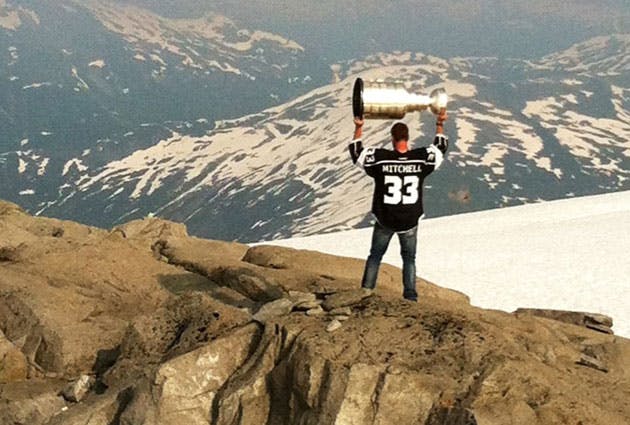
In the case of the Keith Ballard trade, Mike Gillis made the right bet and lost. And he didn’t just lose, he lost spectacularly. This was a bold move that misfired enormously, especially when you consider that the Keith Ballard trade cost the Canucks a top-line scorer, a legitimate NHL grinder, a first round pick and (indirectly) a quality top-four defenseman.
That quality top-four defenseman I’m talking about? That would be recent Stanley Cup winner and tough minutes bad-ass Willie Mitchell. The top-line scorer? That’s Michael Grabner, who was subsequently waived by the Florida Panthers. The legitimate NHL grinder is obviously Steve Bernier, and the first round pick became Quinton Howden who is only having an alright AHL rookie season with the San Antonio Rampage. He’s certainly a prospect but he doesn’t really project as more than a bottom-six forward at the NHL level at this point.
That was the full cost of acquiring Keith Ballard who has played 137 games with the Canucks over three seasons, and hasn’t played very well. He’s dealt with a variety of injuries including a concussion in the latter half of the 2011-12 season and he’s been a frequent supper guest in Alain Vigneault’s puppy motel.
Any way you slice it, that’s an indefensibly meagre return on the treausure Mike Gillis spent to acquire Keith Ballard.
The Bet

That Keith Ballard would fit so poorly into Alain Vigneault’s system in Vancouver, however, was an unpredictable event. For three seasons prior to joining the Canucks, Ballard was a steady top-four defenseman. He soaked up the most difficult minutes for the Coyotes and the Panthers, starting an ungodly number number of shifts in the defensive end on some pretty awful teams. While Ballard didn’t quite come out ahead by the possession data, he held his own and managed to produce offense at a reasonable rate considering his usage.
He also almost never missed a game, had a reputation as a big hitter and was among the fastest pure skaters among all NHL defenseman (still is, actually).
The Context
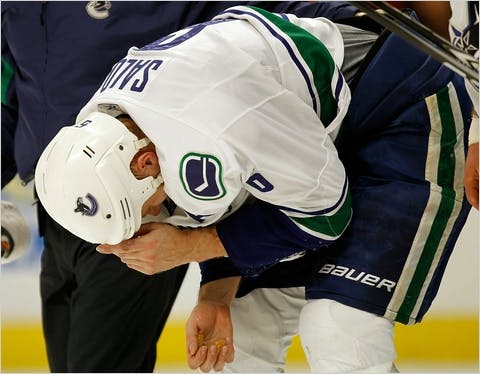
At the time of the Keith Ballard trade, Mike Gillis and the Canucks were coming off of a season in which injuries ravaged their defense-corps and ultimately sabotaged the club’s chances in the postseason. Willie Mitchell was concussed by Evgeni Malkin mid-way through that season, Sami Salo missed his standard fourteen games, and Kevin Bieksa missed twenty-seven games that year too. The Canucks used eleven defenseman that season including Brad Lukowich, Evan Oberg and Nolan Baumgartner and were so desperate for blue-line depth that they traded for Andrew Alberts at the deadline…
By the time the Canucks were sputtering against the Blackhawks in the the second of three straight playoff series’ between the two rivals, they were playing Shane O’Brien in their top-four (on the left side of Christian Ehrhoff). Sami Salo took a Duncan Keith slapper to the balls that series and injuries forced Alex Edler out of the lineup in the deciding game six.
Another critical contextual data point? Henrik Sedin had just completed his best season as a professional, winning the Hart Trophy and the Art Ross, and he was a couple of months away from turning thirty years old. His success was suggestive of two big picture ideas: the first was that the Canucks could score with anybody in the league, and the second was that the core of this team maybe had a chance to go all the way.
As such it was imperative that next season’s team possesses a deeper blue-line, one better suited to withstand the grind of an 82 game season and (hopefully) a long run through the playoffs. Also, it was critical to add puck-moving type defenseman to help key the attack.
Willie Mitchell is one hell of a defenseman, but the fact remains that the Canucks were a better team in 2009-10 after he went out with injury. With Christian Ehrhoff and Alex Edler soaking up Willie Mitchell’s minutes, the Canucks became a more dangerous vertical club, their offense improved and so did their possession numbers.
There’s a great Dave Tippett quote about "types" of defenseman and the "defensive defenseman" fallacy that Corey Sznajder recently used in an article over at Hockey Prospectus about zone-exits. I think it’s applicable here too:
We had a player that was supposed to be a great, shutdown defenseman. He was supposedly the be-all, end-all of defensemen. But when you did a 10-game analysis of him, you found out he was defending all the time because he can’t move the puck. Then we had another guy, who supposedly couldn’t defend a lick. Well, he was defending only 20 percent of the time because he’s making good plays out of our end. He may not be the strongest defender, but he’s only doing it 20 percent of the time. So the equation works out better the other way. I ended up trading the other defenseman."
That summer Mike Gillis clearly placed a premium on speed.
But he also put a premium on "durability" and he went out and acquired two steady defenseman in their mid-to-late twenties with wheels and virtually no injury history. Those two defenseman were Keith Ballard and Dan Hamhuis. Meanwhile the chronically injured Willie MItchell was jettisoned and signed a lucrative deal with the Los Angeles Kings.
Average number of games played per season between 2005-06 and 2009-10:
| Defenseman | Average GP 2005-2010 |
|---|---|
| Dan Hamhuis | 80.6 |
| Keith Ballard | 79.4 |
| Willie Mitchell | 68.8 |
The Outcome
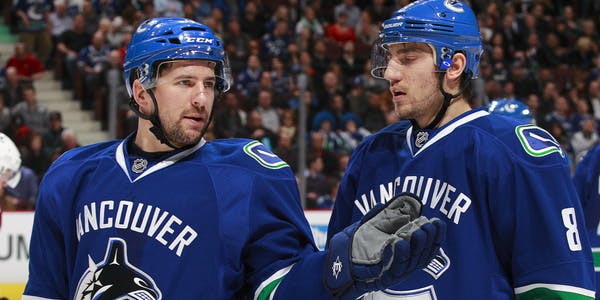
Keith Ballard: among the league’s most expensive third pairing defenseman.
Photo Credit: Jeff Vinnick
From a post on this subject that I wrote this past summer:
This past season, Keith Ballard – the younger man with the history of being durable – missed much of the season with a concussion, while Willie Mitchell, who was thought to be "finished" and had managed to play only two full seasons in his entire career previously: suited up for 96 games including playoffs. Needless to say, he played some excellent defensive hockey and was a critical contributor in a top-four role on a Stanley Cup winning team.
Needless to say the Keith Ballard trade hasn’t worked out for the Canucks. But Mike Gillis’ efforts to stack the deck along his blueline were, in my view, founded on solid reasoning and evidence. Meanwhile Dean Lombardi (the Kings general manager) took a massive risk in committing two years and seven million to the oft-injured Mitchell, who at the time was coming off of a concussion so severe he often was unable to attend games in the press box.
This is an illustrative contrast, I think, because Dean Lombardi chased a straight and it hit. Mike Gillis meanwhile bet on pocket kings when a Queen was the high-card on the table – only to have an ace come up on the river.
I’m not writing this to defend Mike Gillis. There’s no way around it: the Keith Ballard trade was an abject failure for the General Manager and his club. I’m writing this because a lot of the criticism of Mike Gillis that I’ve read of late misses the point, or doesn’t seem to understand the nature of his "bold moves" and how exactly they’ve failed.
Keith Ballard hasn’t worked out in Vancouver – like, at all – and is all but sure to be the subject of a swift compliance buyout this summer. That this has happened while Willie Mitchell played 90+ games last season for a team that won the cup and Michael Grabner had scored at a dizzying rate on Long Island just rubs salt in that wound and makes the deal look even worse in retrospect.
You can judge Mike Gillis to have erred in his judgement on the Keith Ballard acquisition, and I’d wager that he’d admit it himself (though probably not on the record). But the decision making process that led to this trade still strikes me as defensible, even sensible. I think that’s worth keeping in mind as Mike Gillis’ trade record is scrutinized ad nauseum over the next eight days in the lead up to this season’s trade deadline.
Recent articles from Thomas Drance


